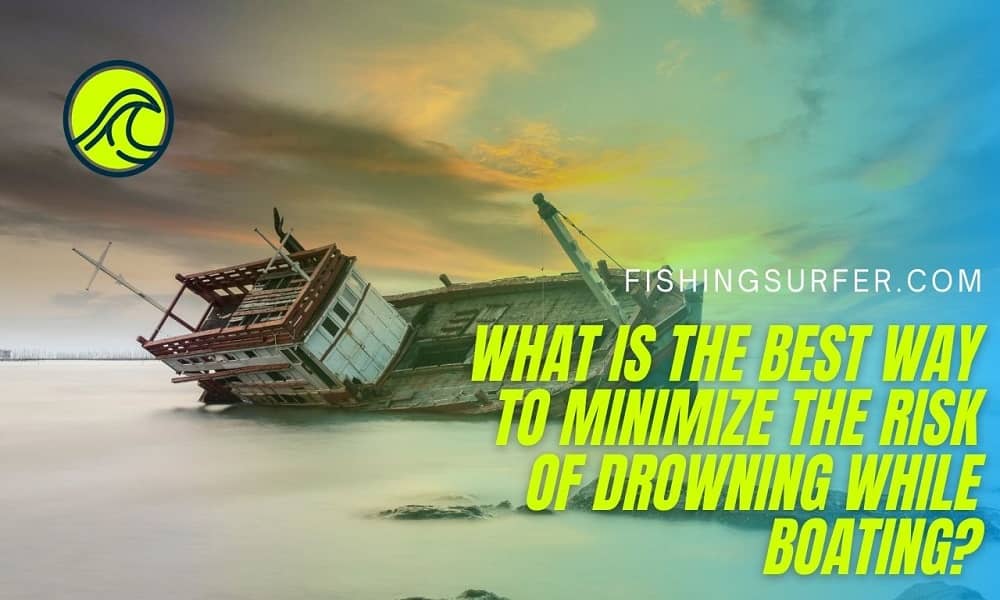A lot of people seem to think that boating and driving are very similar. But one of the crucial differences is that when you stop your car, you can almost always just get off and be safe on the ground. That’s not exactly true when you’re boating and on the water. Someone can always fall overboard, and then you have a huge problem.
It’s not even all that rare.
- Drowning is actually the most common cause of death connected to drowning, with trauma a very distant second.
- Almost 4 out of 5 fatalities in boating accidents died by drowning.
- In 2019, there were 439 reported deaths due to boat-related drowning.

Preventing Accidents That Lead to Drowning
There are plenty of possible scenarios that can lead to drowning, unfortunately. Perhaps the scenario that comes to your mind is that someone simply falls overboard.
But you can have people fall overboard because you’ve collided your boat with another vessel, or maybe with some fixed object in the water. The boat may be flooded as well, especially if you’re caught in a ferocious storm.
Here are some tips that should reduce the chances of accidents that can lead to drowning:
- Obey the boating safety statutes required by your state. They’re there to keep you safe, and not merely to cause you some sort of inconvenience.
- If your state doesn’t have these statutes, check out the US Coast Guard safety guidelines. Comply with all USCG requirements for equipment on board.
- Better yet, attend a boating safety course.
- Make sure that everyone who comes aboard your boat know how to swim. This is just common sense. A non-swimmer has no place on a boat, even if it’s moored and the water is calm. You just never know.
- Everyone aboard should wear Coast Guard-approved PFDs, especially on deck.
- Children should be monitored at all times when they’re on a boat. They should wear their PFDs at all times, and not just when they’re on deck.
- No one should be drinking while on a boat, or take any sort of recreational drug or medication with mind-altering side effects. That just increases the chances of someone falling overboard, or doing something stupid on the helm.
- Keep to the speed limit.
What to Do When Someone Falls Overboard
Of course, even when you take all precautionary measures, you can’t be sure that someone won’t fall overboard for some reason. When this happens, you better know what to do. That’s why you should take a boating course—you’ll learn what to do in various boating situations.
In any case, if you’re the boat operator and someone falls overboard, you’re still responsible. Here are some tips on what to do if this situation arises:
Keep Someone Focused on the Person in the Water
If someone falls overboard, everyone should look for that person immediately. When someone finds that person in the water, instruct someone to keep their eyes firmly glued on the person in the water. This way, you can make sure that you know the victim’s precise location at all times.
Alert the Authorities
Use your VHF radio and call the authorities for help. It doesn’t matter if you think that you’ve got the situation well in hand and you’re about to get everything settled. Alert the authorities anyway, in case your assessment proves to be overly optimistic.
In fact, even if you do get the victim right back on board your boat, the victim may still need medical assistance. You may actually have to get that medical assistance as quickly as possible, due to the chances of what’s known as “secondary drowning”.
This is when people have seemingly recovered from a near-drowning experience, and they actually still have some water inside their lungs. These people can develop breathing difficulties even hours afterwards.
Don’t Go Straight at the Victim
When your boat is moving fast and someone falls overboard, don’t just make a U-turn and head straight for the victim. That just runs the risk that your boat would just go over the victim instead. Even after you’ve cut your throttle, the momentum can still carry the boat forward.
Instead, circle around the victim. Set the boat on the downwind side so the wind doesn’t push your boat over the victim.
Use Your Throwable PFD
This is why a throwable PFD is a Coast Guard requirement for boats. The line should be properly knotted at the end so that the victim can grab the line more easily, and you can haul the victim in.
Send a Crew Member In
In some cases, throwing a line to the victim may not work. Perhaps the victim is unconscious, or they’re having trouble staying afloat or grabbing the line. In this instance, you may have no other choice but to send in a crew member as your lifeguard.
Just make sure that the would-be savior is wearing a life jacket, and that they’re tethered to a line. Or else you just end up with 2 potential drowning victims instead.
Approach the Victim from Behind
It’s very possible that you may be the one who has to go overboard to get the victim back to your boat. If it’s possible, approach the victim from behind. This gives you better control over the situation, and prevents the victim from panicking and grabbing you. The victim may just end up pushing your head under the water instead.
What If You’re the Victim?
Hopefully, you were at least smart enough to be wearing a life jacket at the time, and that you also know how to swim. But you still need to worry about hypothermia.
You need to conserve body heat, so pull your knees up to your chest. Cross your arms over the front of your life jacket. Don’t move too much, so you can retain your body heat and survive longer even in icy water.
Conclusion
If you’re the boat operator, you’re in charge. That doesn’t just mean that you’re the captain and what you say goes. It also means you’re personally responsible for the safety of everyone on board.
Basically, if something happens to them, consider yourself at fault. That may be an extreme attitude to take, but it should help you take the possibility of boat-related drowning seriously.
And if you’re just a guest on a boat, take care of yourself. Don’t drink, wear your PFD, and be sure you know how to swim!
